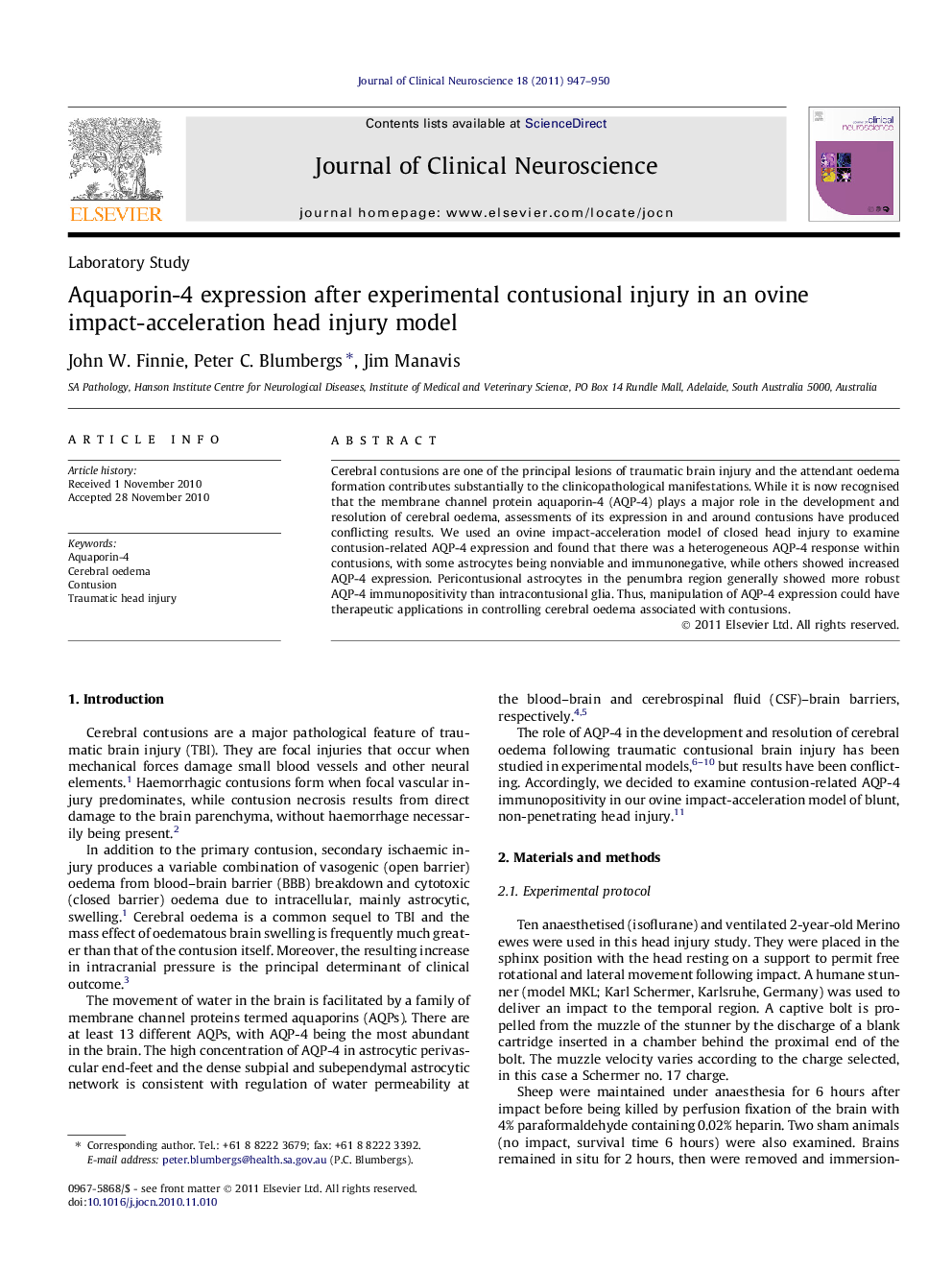| Article ID | Journal | Published Year | Pages | File Type |
|---|---|---|---|---|
| 3061117 | Journal of Clinical Neuroscience | 2011 | 4 Pages |
Abstract
Cerebral contusions are one of the principal lesions of traumatic brain injury and the attendant oedema formation contributes substantially to the clinicopathological manifestations. While it is now recognised that the membrane channel protein aquaporin-4 (AQP-4) plays a major role in the development and resolution of cerebral oedema, assessments of its expression in and around contusions have produced conflicting results. We used an ovine impact-acceleration model of closed head injury to examine contusion-related AQP-4 expression and found that there was a heterogeneous AQP-4 response within contusions, with some astrocytes being nonviable and immunonegative, while others showed increased AQP-4 expression. Pericontusional astrocytes in the penumbra region generally showed more robust AQP-4 immunopositivity than intracontusional glia. Thus, manipulation of AQP-4 expression could have therapeutic applications in controlling cerebral oedema associated with contusions.
Related Topics
Life Sciences
Neuroscience
Neurology
Authors
John W. Finnie, Peter C. Blumbergs, Jim Manavis,
